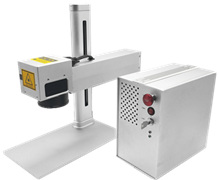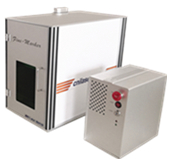The MBR wastewater treatment system is a combination of "membrane separation techniques" and "biochemical treatment techniques." The use of integrated membrane bioreactor test equipment to solve the domestic sewage, the results of the water quality is better than the solid waste water reuse standards. Bei Xiaohe sewage treatment plant using MBR process, influent waterside margin of variation is relatively large, but the quality of its effluent is stable, basically in the end, "municipal wastewater reuse city miscellaneous water quality" (GB / T18920-2002) requirements. MBR technology is now focused on the reuse of water, urban sewage, industrial wastewater, sewage disposal, light pollution of drinking water purification and other regions. 1, MBR development status at home and abroad In the late 1960s, the Dorr-Oliver Organization pioneered the development of the first MBR for office use and shipped it to the ship's wastewater treatment facilities. At that time, the general use of split configuration, the actual project to use more immersed MBR. The late 1980s, Japan and the United States have opened up a hollow MBR process (immersion). From1985to1995, Jhetford Organization promoted the split-cycle-multi-tube process (multi-tubular) and applied it to the wastewater reuse project in the United States. Although the MBR technology developed in our country started relatively late compared with foreign countries, in recent years, MBR Explore applications and foreign search sync, and some regions ranked the world. The "White Paper on China's MBR Industry Development" co-authored by China Membrane Industry Association shows that as of the end of 2013, there are more than 50 large-scale tens of thousands of MBR projects in operation in our country. The statistical processing capacity exceeded daily 2.3 million tons. In North China, the MBR project is mainly used for reclaimed water reuse and municipal wastewater treatment, and is mainly used in the southeast region to solve the problems of refractory industrial wastewater and high-concentration organic wastewater. It is estimated that by 2015, the accumulated capacity of MBR system put into operation and under construction in China will be greater than 5 million m3 / d. 2MBR Fundamentals MBR technology is the combination of biochemical reactions and membrane separation, eliminating the need for secondary sedimentation tank, the implementation of the membrane components of muddy water division. Sludge and impurities stored in the reaction tank, which makes the MBR system solid suspended solids concentration (MLSS) is relatively large, to prevent microbial consumption. Hydraulic HRTT and SRT phase separation can be controlled separately without the worry of sludge expansion. At this point, you can use high concentrations of activated sludge degradation of some of the traditional methods of activated sludge refractory substances. Influent water quality, the impact of water changes on the reactor is not significant, impact load, you can get solid and good water. 2, MBR in the sewage treatment applications During the past decade, the MBR system has been addressing the wastewater in our lives. Wastewater from hospitals, effluents from effluents, industrial effluents and all industrial effluents, which are relatively high in concentration and difficult to degrade, play an important role. The MBR needs to be preprocessed, most of which are in combination with other processes. 2.1 MBR - anaerobic / anoxic alternate process Alternate Anaerobic / Anaerobic - Membrane Bioreactor (AA / AM) process can improve the effect of nitrogen and phosphorus removal of domestic sewage. The process consists of alternating anoxic / anaerobic reaction cells and an aerobic cell with a built-in membrane filtration unit. Through the change of sludge flow direction at the bottom of the aerobic tank, anoxic and anaerobic environments are successively formed in the two independent reactors (A and B) to achieve simultaneous anaerobic phosphorus release, anaerobic denitrification and aerobic Phosphorus, nitrification, removal of BOD and other processes. Aerobic reactor for continuous aeration to slow down the membrane fouling process, to extend the cleaning cycle. The average removal rates of COD, TN and TP in the process reached 93%, 67.4% and 94.1% respectively. 2.2 A2 / 0 + MBR process
CNI released the Mini Laser Marking machine - intended to provide customers convenient, fast, efficient and economical marking solutions. According to different Laser source, this machine can be divided into two type, 1064nm and 532nm laser marking machine. Its compact design and high-quality marking performance has gradually become the mainstream of the market.
• Eggs, apples, vegetables.
End-pumped Laser Marking System,Laser Marking System,Green Laser Machine System,Fiber Laser Marking Machine Changchun New Industries Optoelectronics Technology Co., Ltd. , https://www.opticsqm.com


OEM laser marking machine
Laser marking machine with protective housing
Features
Applicable marking materials
• Best price / performance ratio in the laser marking world
• Metal (gold, silver, copper, Iron, aluminum, titanium, zinc, steel...)
• Easy assembly, simple structure
• Plastic (PC, PVC, PE, HDPE, ABS, PPR, PET, HIPS, PS, PP,
• Small volume, portable and mobile
PPO.PA.POM.PMMA...)
• Air cooled with ultra-compact design
• Glass, leather, mobile phone charger...
Note: Above two versions are optional for 355nm, 532nm and 1064nm laser marking machine.